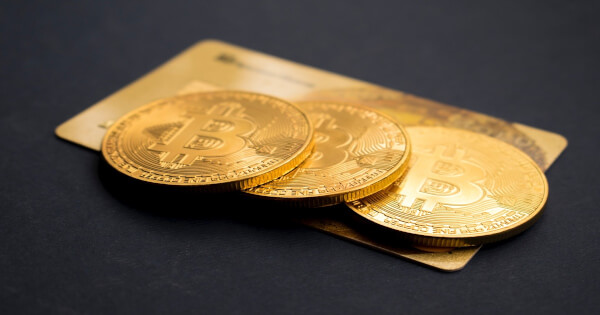Traditional Finances Reimagined: The Future of Digital Finance
Traditional financial institutions such as banks are no longer the only option. The financial services industry will be decentralized and digital in the future.

The financial services industry is one of few leading industries that has yet to be completely disrupted by technology. But the fintech revolution is now underway, thanks in part to the massive amounts of capital flowing into cryptocurrencies.

So what is changing and what will the financial landscape of the future look like? To answer this question, we first need to look at the structure of the financial industry that has existed for decades.
The Status Quo Until Now
Traditionally, financial institutions had a custodial relationship with their clients. They act as custodians of their client’s assets and offer them a relatively limited range of services. This relationship defines the structure of the banking, insurance, and wealth management industries.
The custodial relationship means clients have limited access to third-party services, and external service providers have no access to an institution’s customers.
Institutions are able to maintain the status quo because they are perceived as having a monopoly on trust. Customers trust institutions that are perceived as stable, well-funded and regulated.
This industry’s structure makes it difficult for startup companies to compete, even if they have a better product to offer. It also results in few incentives for traditional institutions to improve efficiency.
This is one of the reasons bank transfers still take days to execute despite the technological advances of the last few decades.
Two concepts are now enabling technology-focused companies to challenge the status quo: blockchain technology and open banking.
Blockchain Breaks the Monopoly on Trust
Cryptocurrency transactions and ownership are recorded on a blockchain, which is a decentralized database. Besides being decentralized, blockchains are also immutable, which means their records cannot be altered once a transaction has been completed.
Other assets and transactions can also be recorded on a blockchain. Securities, property, contracts and even artworks can all be tokenized and traded on a blockchain. When this happens, their ownership and transaction history is also recorded on a ledger that cannot be altered.
The implication for the finance industry is that institutions no longer have a monopoly on trust. When individuals can trust the technology, they no longer have to rely on a custodial relationship with a brick-and-mortar bank or traditional financial institutions.
Open Banking and the Democratization of Finance
New regulations regarding data sharing allow consumers to give third parties access to information regarding their bank accounts and other financial products. Consumers, rather than institutions, now have control of their information and who has access to it. This is the concept of open banking.
Open banking allows external organizations to provide financial services to individuals, with institutions acting as platforms rather than gatekeepers.
Perhaps the most established example is PayPal. PayPal’s users can link their account to a bank account and then use PayPal to make payments. But the concept is now being applied to insurance, financial markets, and other financial services.
The Decentralized Model
The combination of blockchain technology and open banking are paving the way for an entirely new financial ecosystem. Rather than a small number of large institutions providing financial services to clients, consumers will have access to a large number of technology platforms that they can use to buy, and even to sell, services.
These platforms either act as marketplaces or as platforms that provide a service. The barriers to entry are low, therefore more entrepreneurs can compete. In turn, more competition leads to lower prices, more innovation, and improved efficiency.
The Peer-To-Peer Economy
The decentralized finance model is more democratic and, in many cases, boils down to creating a peer-to-peer economy. Institutions no longer have a monopoly on being the middleman between lenders and borrowers, for which they earn a steep margin.
Peer-to-peer lending platforms like Upstart and Prosper charge borrowers lower rates while paying lenders higher rates than banks.
Risk can be reduced if loans are pooled and spread across numerous lenders. Increasingly, artificial intelligence is also being used to forecast the risk associated with each loan.
Insurance policies can also be provided on peer-to-peer platforms. Typically, policies are underwritten by pools consisting of large numbers of individuals. As this model expands, premiums can be reduced, as risk is further diversified.
Democratized Investing
The relationship customers traditionally had with asset managers and stockbrokers is also changing. Investment firms are having to innovate if they want to remain relevant. Thus, they’re now offering clients a wider choice of products and tools at a lower cost.
Large investment firms are no longer the only option to offer investment services. Investing marketplaces, tools and data allow anyone to make secure transactions, invest in different products and earn a profit without the intervention of traditional systems.
One example is copy trading platforms where successful traders can let other traders copy their trades for a share of the profit. Another example is marketplaces where developers can sell or lease algorithmic trading systems to fund managers.
Banks are playing catchup
The investment industry has already evolved a lot in the last two decades. Banks, which have more ground to lose, have been slower to change. One of the reasons is that the decentralized economy still seems risky and hard to understand by many, plus its revenue is still not as significant compared to traditional banks. But that is changing.
On April 14 2021, the cryptocurrency exchange Coinbase became a publicly traded company when it listed on the Nasdaq Exchange. The listing was expected to give Coinbase a market value of close to $100 billion.
Goldman Sachs is currently worth $110 billion, but it took the bank 150 years to reach this valuation. Coinbase has reached this size in just eight years.
This sort of value creation is causing traditional banks to take notice.
It is probably not a coincidence that Goldman Sachs recently announced that it will now be expanding its product offering to include cryptocurrencies.
Banks and other institutions still have a role to play in the financial ecosystem. They enjoy certain privileges due to their regulatory status, and they won’t lose those privileges for some time. But they do need to innovate if they want to be a part of the new financial ecosystem.
Conclusion
The financial services industry of the future will eventually become decentralized, digital, and transparent. Instead of being controlled by a few large companies, it will be democratic.
The ecosystem will consist of platforms and marketplaces where individuals buy, sell and insure assets, and borrow, lend, and invest. A lot of these platforms are currently being built for the crypto economy – but they will ultimately be adopted across the entire economy.
Everyone will have access to any financial service offered, and anyone will be able to provide a service. More competition will lead to more innovation, so we can expect constant improvement and efficiency.
Image source: Unsplash
.jpg)
